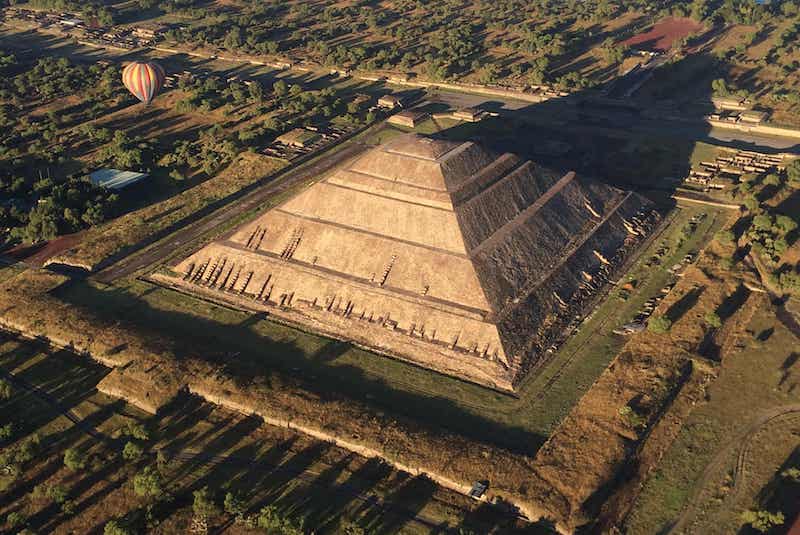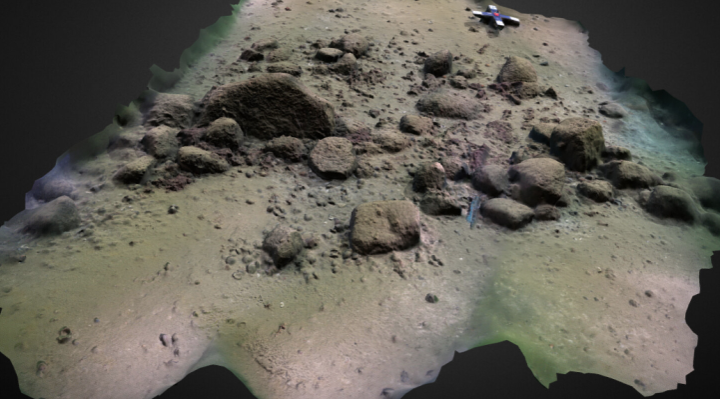Teotihuacan, Cahokia and other metropolises had stunning religious centers, multi-family dwellings and tumuli, but then they disappeared. Archaeology is slowly revealing their glorious past.
Long before Europeans arrived in the New World, Native Americans built pyramids, palaces, temples and tombs, creating cities to rival those in Europe. The peoples of Cahokia traded with their Mesoamerican neighbors; the enigmatic people of Teotihuacan had vineyards throughout Central America; and the Spiro Mounds are said to equal the power and sophistication of the Incas and Aztecs.
Today, researchers continue to uncover great urban centers that testify to the complexity of America’s first megalopolises.
1- Teotihuacan: The Epicenter of Architecture and Art
At its peak in 400 AD, Teotihuacan, just 48 km northeast of present-day Mexico City in the Valley of Mexico, reigned as perhaps the largest city in the Americas

More than 100,000 Teotihuacans lived in an impressive array of palaces, temples, plazas, avenues and thousands of dwellings in 20 square kilometers. In addition to priests, soldiers and merchants, Teotihuacan also had a thriving community of artists whose work influenced cultures throughout Mesoamerica. Today it is the most important archaeological site in Mexico.
Important permanent structures include the imposing Pyramid of the Sun, where a god was believed to have been worshipped in Teotihuacan society, and the Pyramid of the Moon, which was used for ritual animal and human sacrifices – evidence found beneath it includes pumas, eagles, wolves and 12 human remains, 10 of which were decapitated.
Around 750 AD, the central city was burned, probably by invaders, and Teotihuacan never recovered. Who the Teotihuacans were, where they came from and what language they spoke remains a mystery that archaeologists are still trying to uncover.

2- Cahokia: Cosmopolitan Trade Center
Around 1,000 AD, a complex metropolis developed in the rich floodplain near the confluence of the Mississippi, Missouri and Illinois Rivers near present-day St. Louis, Missouri. Known as Cahokia, with a population estimated at between 10,000 and 20,000, it was the largest city in northern Mexico and rivaled European cities of the time.
At least 100 elevated structures dominated the city, some topped with houses and other buildings, while others were used as tumuli. The largest, known as the Monks’ Mound for the Trappist monks who lived nearby in the 1800s, was a terraced structure rising 30 meters. Covering 14 acres at its base, it was larger than the base of the Great Pyramid of Khufu in Egypt.
Little is known about the rulers or history of this ancient civilization, but based on scholarly research, it was a cosmopolitan center of trade, crafts and architecture. The people of Mississippi exchanged goods with other peoples as far north as present-day Wisconsin and possibly with Mesoamerican cultures to the south.
By 1175, something or someone began to threaten the Cahokians, judging by the protective wooden fences they built around the city center. The cooling climate and pressure on the local environment may also have made the city less habitable. By around 1350, the Cahokians had dispersed.
3- Chaco Canyon: Capital of Strong Women
The Chaco culture, which rivals the Cahokian culture in complexity, if not in size, is located to the west, in what is now New Mexico. From the 800s to the 1200s, the ancestral Pueblo people lived in more than 150 settlements around Chaco Canyon, inhabiting large stone mansions with hundreds of rooms, the most important of which was Pueblo Bonito, the center of the Chacoa world.

They practiced farming, trade and religious ceremonies, and were spread over hundreds of kilometers to the west, north and south by a well-maintained road network. The natives used the intermittent flow of local streams through canals and ditches to irrigate their crops of corn, squash and beans. Traders brought exotic products from the peoples of Mesoamerica to the south, such as scarlet macaws and cacao.
The Chacoa people had no written language, so much of what is known about their society comes from burials. In one burial chamber, for example, 13 bodies, probably of high rank, were found surrounded by thousands of turquoise beads, shells, bowls and jugs. DNA analysis showed that most of the individuals were related through their mothers or grandmothers. Power may have been passed down through the maternal line.
By the 13th century, the Chaco began to move to other parts of the Southwest. The exact reason for this is unknown, but it is likely that severe drought forced them to migrate.
4- Spiro Mounds: A Center of Wealth and Power
In 1933, a group of gold prospectors stumbled upon a burial chamber near Spiro, Oklahoma that had been closed for 500 years. Inside, they discovered stunning artifacts such as carved seashells, pearl and shell beads, large human busts, brightly colored blankets and robes. Newspapers dubbed this find America’s “King Tut.”

Twelve mounds, an elite village site and part of a support city were uncovered, all that remains of a prehistoric power that once equaled the size and sophistication of the Aztec and Inca. The Spiro people ruled the Mississippi culture, including Cahokia (now East St. Louis), Moundville in Alabama, and Etowah in Georgia, an area equal to about two-thirds of what is now the United States.
It became a permanent settlement around 800 AD and was used until about 1450 AD. At its peak, about 10,000 people resided here. Artifacts point to an extensive trade network (including copper from the Great Lakes and a shell from the Gulf of Mexico), highly developed religious activities and an advanced political system. Large earthen platforms and tumuli were the most important features of agricultural communities. Leaders built their houses on top of the previous chief’s house, so the higher the tumulus, the greater the prestige of the current leader.
The people of Spiro mysteriously disappeared in 1500, perhaps due to prolonged drought and/or political strife.

5- Etzanoa: The long lost city
Legend tells of a great ancient metropolis that flourished at the confluence of the Walnut and Arkansas Rivers near present-day Arkansas City in south-central Kansas, home to more than 20,000 people, the ancestors of the Wichita Nation.
The inhabitants of Etzanoa, called the “Great Settlement” by other indigenous groups, lived in large beehive-shaped houses, each housing about a dozen people and with lush gardens between the houses. During the winter months, the community would follow herds of bison and build ‘tipi’s’ as temporary dwellings while traveling. They had strong artisan traditions and an extensive trade network stretching back to the Aztec capital Tenochtitlan.

In the late 16th century, Spanish invaders in search of gold came into contact with the group living in this area. According to Spanish accounts, the two groups were friendly and even shared corn bread. But in 1601, the Spanish, led by Juan de Oñate, took hostages and the inhabitants fled. They returned and attacked the Spanish and then disappeared.
French explorers passing through in the 1700s failed to find a city, despite the legend. Archaeologists estimate that smallpox and other diseases killed many of the early settlers. Etzanoa remained a mystery until 2016, when a local teenager found a cannonball linked to the 17th century war. The long-lost city was thus rediscovered.
source used:: National Geographic. 21 November 2022.





